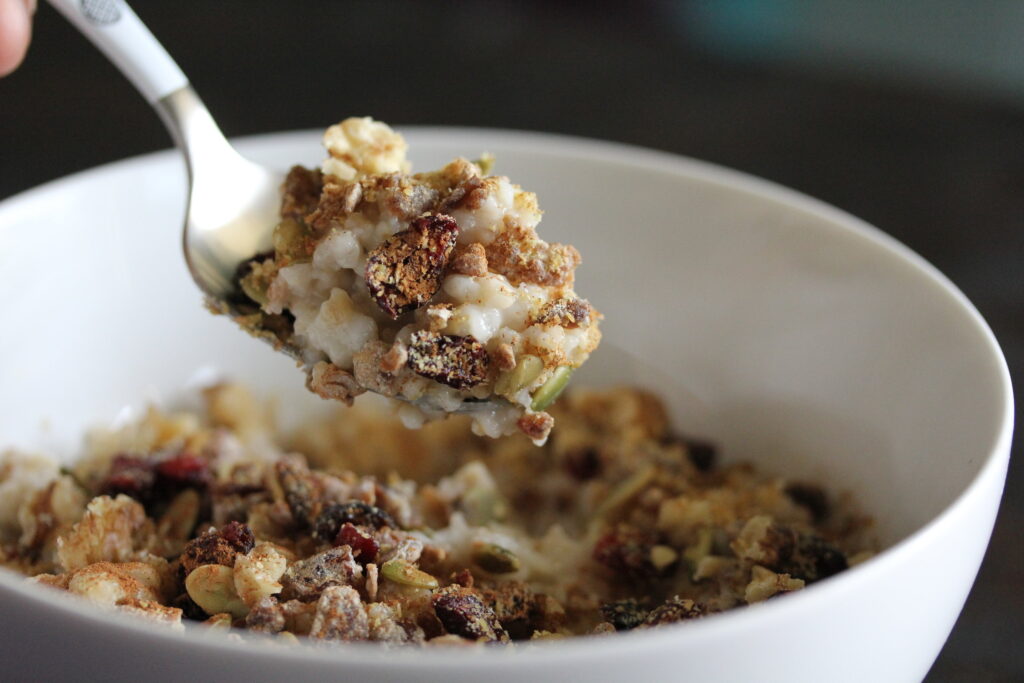The Wholesome Journey - Group Nutrition Coaching Program
Mentorship Program, 1:1 Nutrition Coaching with Alison
What do you want to learn more about?
Program Login
Podcast Features
May 24, 2018
Alison Tierney, MS, RD, CD, CSO
Alison is a registered dietitian, board-certified in oncology nutrition, and a cancer thriver. Her expertise in oncology nutrition and personal experience with her own cancer diagnosis and its treatment provide her with the unique perspective of being able to relate to her clients on an entirely different level. Her content is consistently focused on evidence-based guidelines and seeks to increase the awareness of the power of nutrition to complement traditional cancer therapies.
- Alison Tierney, MS, RD, CD, CSO
- Alison Tierney, MS, RD, CD, CSO
- Alison Tierney, MS, RD, CD, CSO
- Alison Tierney, MS, RD, CD, CSO
- Alison Tierney, MS, RD, CD, CSO
- Alison Tierney, MS, RD, CD, CSO
- Alison Tierney, MS, RD, CD, CSO
- Alison Tierney, MS, RD, CD, CSO
- Alison Tierney, MS, RD, CD, CSO
- Alison Tierney, MS, RD, CD, CSO
Embarrassment. Pain. Anxiety. Depression. Lack of self-confidence.
One struggling with acne may experience many, if not all, of these emotional symptoms related to the presence of acne. If that is you, you are not alone.
Research shows 85% of American teenagers deal with acne. In fact, 50% of men and women experience acne into their 3rd decade of life and it persists into middle age for about 12% of women and 3% of men. (1)
Acne, or medically referred to as acne vulgaris, is considered a disease of western civilization. Epidemiology studies show acne is found in significantly lower rates, or even non-existent, in non-westernized societies. (1)
If seeing the word acne in the title caught your eye because you once experienced or are experiencing acne, I get it. Just like you, I’ve experienced the physical pain and emotional symptoms of acne in my teenage years and well into my adulthood.
“Everyone is looking at my acne.”
“It hurts to open my mouth and chew.”
“I wash my face and have good hygiene, I swear.”
If you’ve thought to yourself any of these thoughts, I’m right there with you. In fact, I would share photos of myself when my acne was at its worst in adulthood… But, if you share these similar experiences, you know those pictures don’t exist. I refrained from photos–especially close ups. Or, if I found one it was quickly ripped up or untagged from Facebook.

I tried practically every over-the-counter acne treatment, face wash, x-step regime, etc. Some treatments would work for a little while, but come right back in full force after some time. Then I was right back where I started. Frustrated. Embarrassed. Fed up.
But then my face slowly started clearing up. People were noticing and commenting on how excellent my skin was looking and asking what I was doing different.
Of course, you guessed it, I changed my diet.
I didn’t change my diet specifically related to my acne. Instead, it became a positive side effect of my change in diet as we dealt with infertility. If you missed that story, you can read about it here.
As it turns out, contrary to belief or persistence by much of the medical community and including some of the best dermatologists out there, acne is often heavily influenced by our diets.
Here’s the scoop.
There is substantial evidence that milk and dairy enhance and aggravate acne. This evidence relates to a signaling pathway in humans referred to as mTOR, or mammalian target of rapamycin.
Rapa-what? Stay with me. I’ll explain.
mTOR is a pathway in the human body which plays a large role in cell development and aging. Think of a pathway as a process–a process that happens in the body in result of specific products or nutrients available. This mTOR pathway is activated (or, started) in response to nutrients, growth factors, and stress. The overactivation of this pathway, often as a result of high dairy and milk consumption, is not a good thing. It is linked not only to acne, but cancer, diabetes, obesity, heart disease, high blood pressure, and even Alzheimer’s. (1, 2)
![For those who would like to know more, here is a look at the over stimulation of mTOR. Photo from: Screen Shot, "Saving Lives by Treating Acne with Diet", [0:50/4:39]](https://wholesomellc.com/wp-content/uploads/2024/04/mTORPathway-1024x465.png)
The evidence of overactivation of this pathway is often first demonstrated by acne in early puberty (2). The continued overactivation may lead to other chronic diseases. With that being said, a history of acne in an individual has been associated with increased breast cancer risk in women and increased prostate cancer risk in men (3).
Why is milk and dairy products associated with this mTOR overactivation? It is found that leucine, an amino acid, is the primary activator of the overactivation. It is important to note, the amino acid leucine is found in many different types of foods, including plant-based foods. However, in comparison, dairy milk contains 3-times more leucine than human breast milk, which is considered the most ideal source of nutrients for a growing human. (4)
Leucine is an essential amino acid, meaning it is needs to be consumed since the human body does not make it on its own. However, it is not required in the excessive amounts found in the average western diet which is high in dairy, meat/poultry, and eggs. Adequate amounts can be achieved in those who consume a whole foods, plant-based diet.
So, what’s next?
Here are my top 5 recommendations to focus on reducing your troublesome acne and achieve naturally glowing & clearer skin:
1. Reduce your consumption of dairy and animal based products.
Research suggests diet should be a the primary aspect of preventing mTOR driven diseases, such as acne (3). Reducing or eliminating animal based foods, especially dairy foods, can help reduce troublesome acne because it can lower the overactivation of the mTOR pathway (which we talked about above). In my own journey, I experienced improvements in acne when I slowly reduced animal based foods in my diet. However, I experienced the greatest improvement when I completely eliminated meat & dairy.
2. Increase your consumption of whole fruits and vegetables.
Secondary to reducing animal based products in the diet, it is important to increase your consumption of whole fruits and vegetables. We all know fruits and vegetables are healthy for us. But fruits and vegetables are not just full of fiber and low in calories, they also contain natural mTOR inhibitors (5). The natural inhibitors help to prevent overactivation of this pathway which has not only shown to increase acne, but also obesity, diabetes, cancer, heart disease, and several other chronic diseases.
3. Along with other whole, plant-based foods, add unsweetened tea, such as green tea to your daily diet.
Tea, especially green tea, contains a phytochemical called quercetin. Quercetin is also a natural mTOR inhibitor which can decrease acne (6). Green tea itself has numerous researched benefits to health, including but not limited to, playing a role in breast cancer prevention (7), lowering cholesterol (8), lowering blood pressure (9), lowering blood sugar (10), and body fat (11). If including tea into your diet, aim for it to be unsweetened, free of creamer, and aim for 12 ounces per day.

4. Reduce/eliminate processed and/or “junk” foods.
We live in society driven by convenience. With that comes aisles and shelves full of highly processed foods. Even if a “nutrition bar” is considered plant-based, it doesn’t necessarily mean it is healthy. When you can, limit your consumption of these highly processed convenience foods. When left to only the option of quick foods, aim to choose foods minimally processed with a short list of whole, natural ingredients.
5. Limit your consumption of added oils.
Some individuals, even some physicians and nutrition professionals, believe in and recommend high consumption of fats. Although it is true fats are essential to the diet and needed for several functions within the body, we don’t require fat in the amounts many of us are consuming. Excessive oil consumption, even if it is extra virgin olive oil, can increase the presence of acne, increase body weight, and increase the risk for several chronic diseases such as type 2 diabetes and heart disease. Aim to meet your fat needs through whole nuts, seeds, and avocados–but still keep your consumption to a minimum. It is important to note even the consumption of some high-fat plant foods (i.e. avocado, nuts, seeds, some non-dairy milks, etc.) can be troublesome for acne. Start with these five steps and if you are still struggling, be mindful of these high-fat plant foods in your diet as well.
*****
Although there are several factors which contribute to acne and other chronic diseases, focusing on these five recommendations can help you achieve the glowing skin you are looking for while also reducing your risk for several types of chronic diseases. Win-win!
While my acne is not completely gone (I still have occasional small breakouts), my skin has drastically improved. Additionally, the scarring I experienced during my toughest times with acne has improved drastically.
Sometimes, I still can’t believe the difference in my skin–even when living with the hormonal-based condition of PCOS.
Wishing you youthful, glowing skin and good health for years to come!
***
References
(5) F W Danby. Turning acne on/off via mTORC1. Exp Dermatol 2013 22(7):505 – 506.
(6) Bruning, A. (2013). Casein Kinase 2 (CK2) Inhibitors: Emerging Anticancer Therapeutic Agents? Advances in Anticancer Agents in Medicinal Chemistry, 1025-31. doi:10.2174/9781608054930113010004
(7) GREGER, M. S. (2018). HOW NOT TO DIE: Discover the foods scientifically proven to prevent and reverse disease. S.l.: PAN BOOKS.
(8) Zheng W, Gustafson DR, Sinha R, et al. Well-done meat intake and the risk of breast cancer. J Natl Cancer Inst. 1998;90(22):1724-9.
(9) Rohrmann S, Lukas Jung SU, Linseisen J, Pfau W. Dietary intake of meat and meat-derived heterocyclic aromatic amines and their correlation with DNA adducts in female breast tissue. Mutagenesis. 2009;24(2):127-32.
(10) Santella RM, Gammon M, Terry M, et al. DNA adducts, DNA repair genotype/phenotype and cancer risk. Mutat Res. 2005;592(1-2):29-35.
(11) Lauber SN, Ali S, Gooderham NJ. The cooked food derived carcinogen 2-amino-1-methlyl-6-phenylimidazo[4,5-b] pyridine is a potent oestrogen: a mechnistic basis for its tissue-specific carcinogenicity. Carcinogenesis. 2004;25(12);2509-17.
5 Natural Ways to Minimize Acne
Wholesome LLC is not a medical practice, and its employees cannot offer medical advice. This website provides educational information but it is not a substitute for medical advice from a licensed medical professional who is familiar with your particular facts and circumstances. The information contained on this website is not intended to diagnose, treat, or cure any disease and shall not be construed as medical advice. The information and education on this website is provided for you to use at your own discretion.
You can further review our disclaimer here.
Wholesome
About Alison
Courses & Programs
The Wholesome Journey
Free Resources
FAQs
Press & Media
Recipes
Blog
Contact Us
Shop
© 2025 Wholesome, LLC All rights reserved.
Privacy Policy
Terms of Use
Disclaimer
Mobile Terms of Service